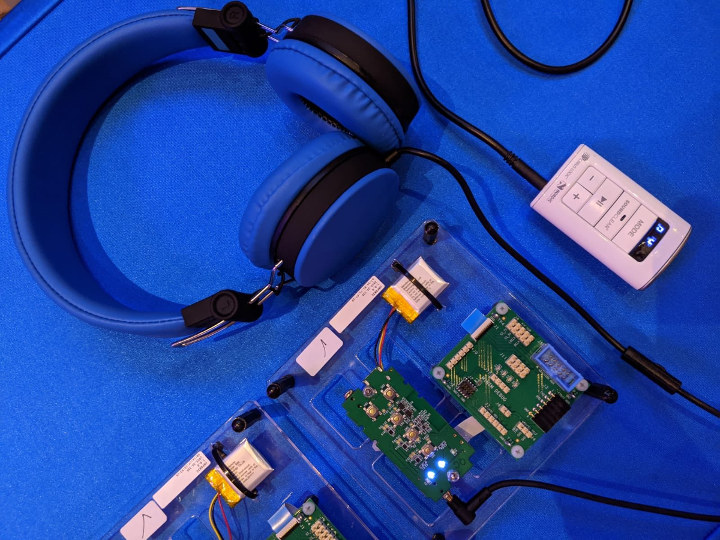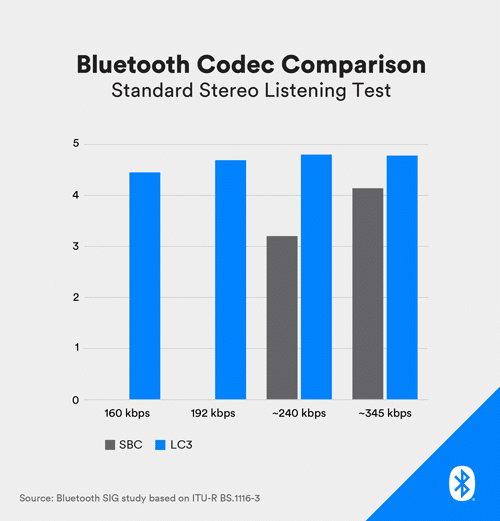I first heard about Bluetooth LE (Low Energy)- part of Bluetooth 4.0- in 2013 with RFDuino board, and it came to prominence once Android 4.3 added support later this year. Bluetooth LE is using to transmit messages using as little as energy as possible for example to synchronize data between a smartphone and a smartwatch.
But if you ever had to transmit audio, you had to rely on Bluetooth Classic which, albeit considering low power, consumes more energy. But you should soon have much longer battery life on your Bluetooth headphone or battery-operated speaker, as the Bluetooth SIG has just announced Bluetooth LE Audio which adds a new codec and support for multi-stream and broadcast audio.
The new high-quality, low-power audio codec used in the new Bluetooth standard is called the Low Complexity Communications Codec (LC3). The chart above shows the results of listening tests between LC3 and SBC codecs at different bitrates with a score from 0 to 5 representing audio quality. We can see LC3 @ 160 Kbps offers similar, even slightly better, quality than SBC at 345 Kbps.
That’s this lower bitrate together with the use of the LE radio that lead to power savings that will enable product developers to either lengthen the battery life or reduce the form factor with a smaller battery.
Bluetooth LE Audio support both Multi-Stream Audio to enable the transmission of multiple, independent, synchronized audio streams between an audio source device (e.g. a smartphone) and one or more audio sink devices, and Broadcast Audio to allow on audio source device to broadcast one or more audio streams to an unlimited number of audio sink devices. The latter feature will allow Bluetooth Audio sharing between friends and family, or to multiple users at an airport or other public places.
Finally, Bluetooth LE Audio adds support for Bluetooth hearing aids with wireless calling, listening, and watching, but it’s not very clear which specific features make this possible, as Bluetooth hearing aids have been available for a while. One easy-to-guess advantage of Bluetooth LE Audio for hearing aid is the ability to use smaller batteries. , but there must be more to it.

The specifications are expected to be released sometime in H1 2020, but Nordic Semi is already showcasing a Bluetooth LE Audio evaluation platform at CES 2020. The kit specifications are very interested as the evaluation kit is based on nRF52832 Bluetooth LE SoC, Cirrus Logic’s CS47L35 smart codec, Packetcraft’s Bluetooth LE host stack and link-layer supporting Bluetooth LE Audio, and a BLE Audio Software Development Kit (SDK). That means there’s apparently no need for hardware changes, and only the firmware and software stacks need to be updated.
You can find out more on Bluetooth LE Audio on Bluetooth SIG website, the announcement blog, and Nordic Semi’s press release.

Jean-Luc started CNX Software in 2010 as a part-time endeavor, before quitting his job as a software engineering manager, and starting to write daily news, and reviews full time later in 2011.
Support CNX Software! Donate via cryptocurrencies, become a Patron on Patreon, or purchase goods on Amazon or Aliexpress





